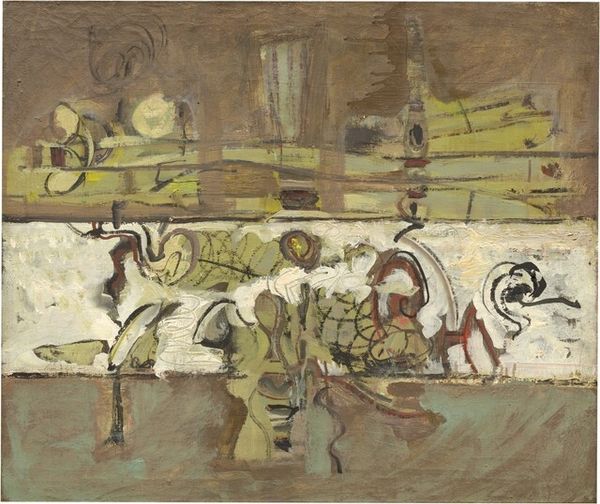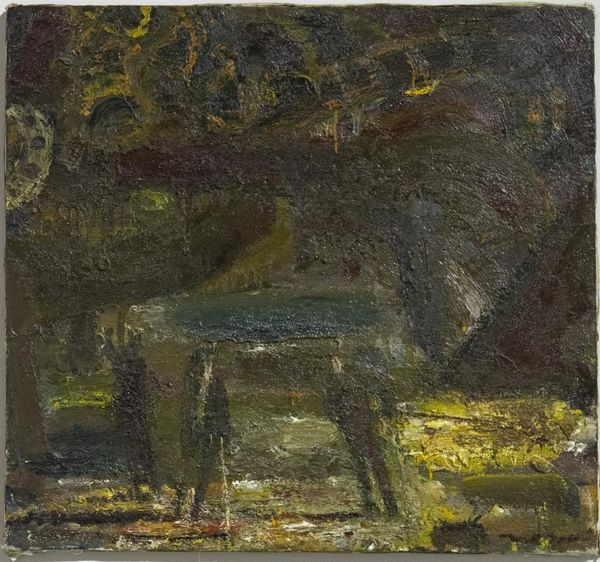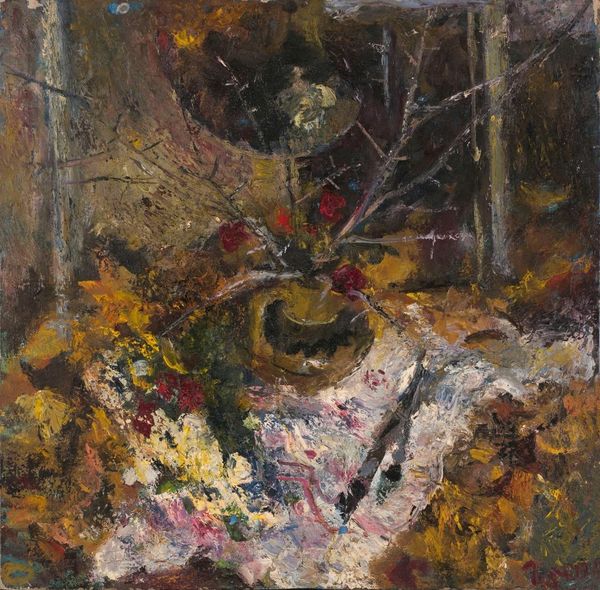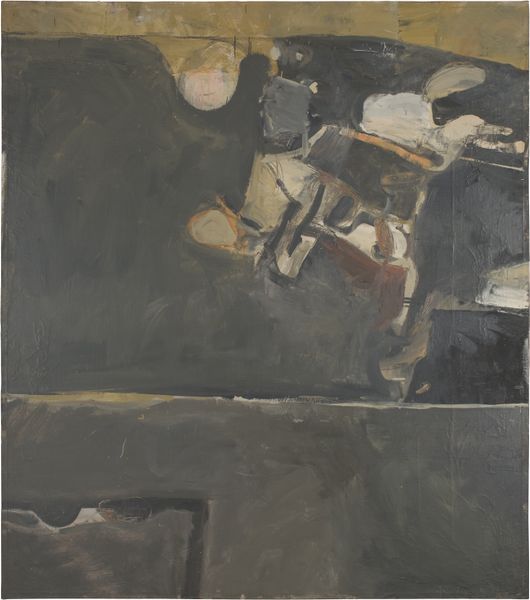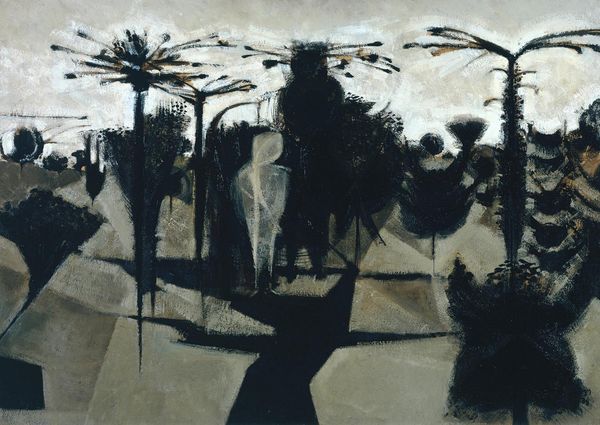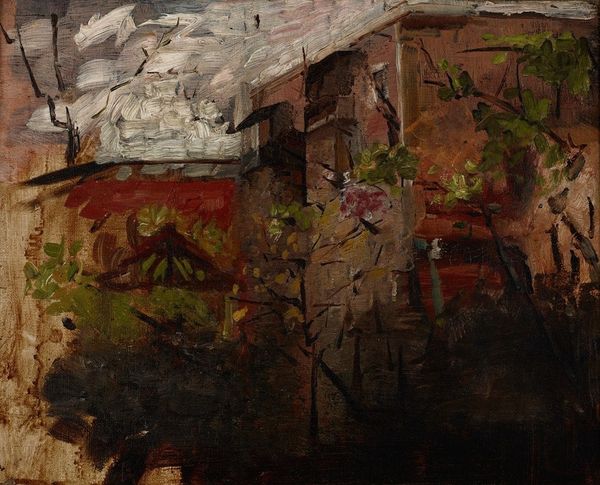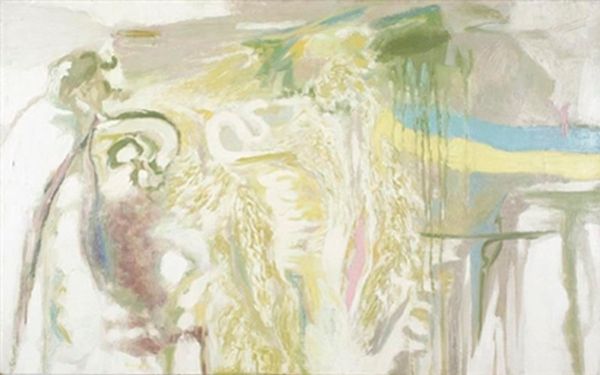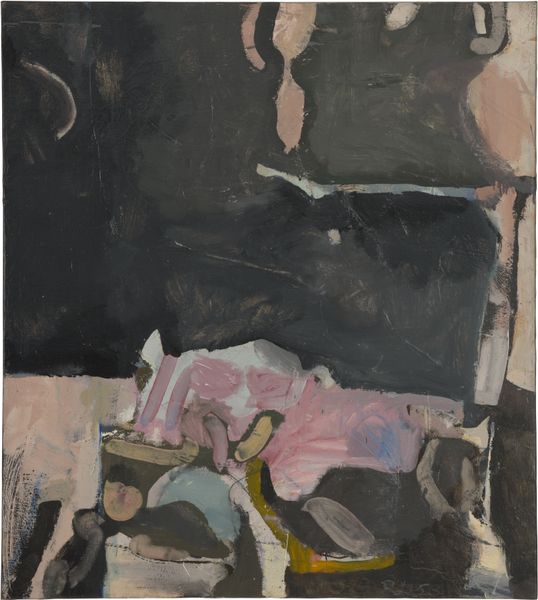
Dimensions: support: 1448 x 1283 mm frame: 1628 x 1464 x 120 mm
Copyright: © Tate | CC-BY-NC-ND 4.0 DEED, Photo: Tate
Curator: Here we have Francis Bacon’s *Figure in a Landscape,* currently held at the Tate. What's your immediate sense of this image? Editor: Bleak. The colors feel muted, the figure hunched... it's like watching a beautiful garden slowly succumb to some unknown dread. Curator: Notice the motif of confinement. The figure is trapped—by the landscape, by the chair, by the very brushstrokes that define him. This resonates with Bacon’s broader exploration of existential angst. Editor: Angst is putting it mildly! The blurring gives it a sense of unease, a feeling of something dissolving, or being repressed. That pipe emerging seems almost violent. Curator: Consider the psychological weight of a figure forced into such a space. Bacon uses the landscape as a stage for internal drama, where the figure is both actor and victim. Editor: It’s fascinating how Bacon distorts and deconstructs the figure. It’s more than just portraiture; it’s an emotional autopsy. Curator: Indeed. The image leaves us contemplating the fragility and the often brutal nature of human existence. Editor: A somber thought, but a fitting endnote. I feel like I need a long walk after that!
Comments
tate 3 months ago
⋮
http://www.tate.org.uk/art/artworks/bacon-figure-in-a-landscape-n05941
Join the conversation
Join millions of artists and users on Artera today and experience the ultimate creative platform.
tate 3 months ago
⋮
This painting is thought to be based on a photograph of Bacon’s lover Eric Hall wearing a flannel suit dozing on a seat in Hyde Park. A substantial section of the body has been overpainted, suggesting a black void. An open mouth can be discerned speaking into microphone, a detail that may have derived from photographs of Nazi leaders giving speeches. The pastoral setting is therefore contrasted with the intimations of organised political violence, making this an early example of Bacon’s combination of aggression and everyday mundane reality. Gallery label, July 2010
